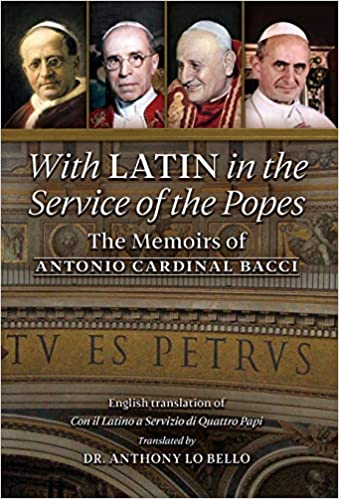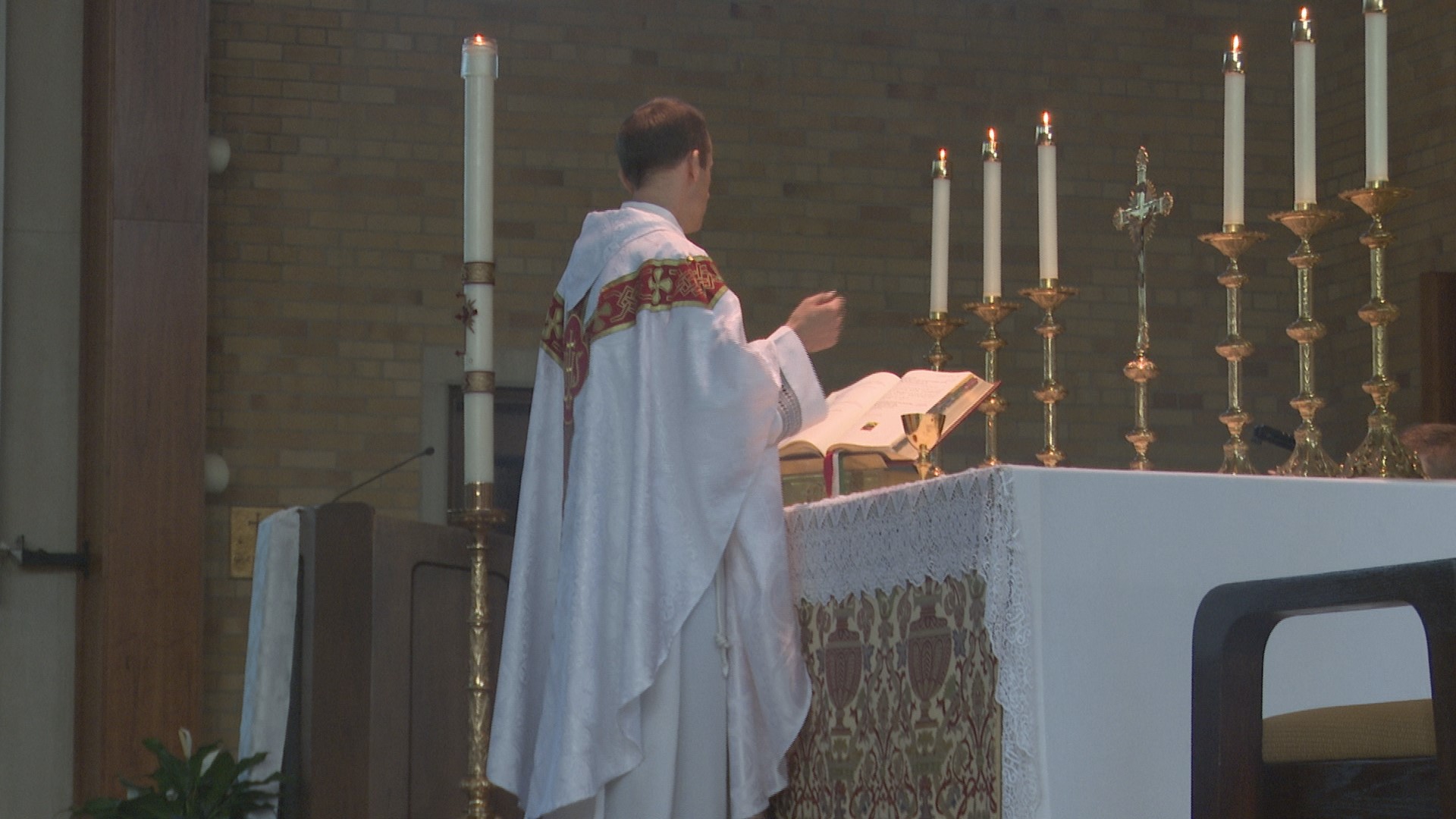Sollemnitas
Ad Missam in Vigilia
Hæc Missa adhibetur vespere diei 24 decembris sive ante sive post I Vesperas Nativitatis.
Ant. ad introitum Cf. Ex 16, 6-7
Hódie sciétis, quia véniet Dóminus, et salvábit nos,
et mane vidébitis glóriam eius.
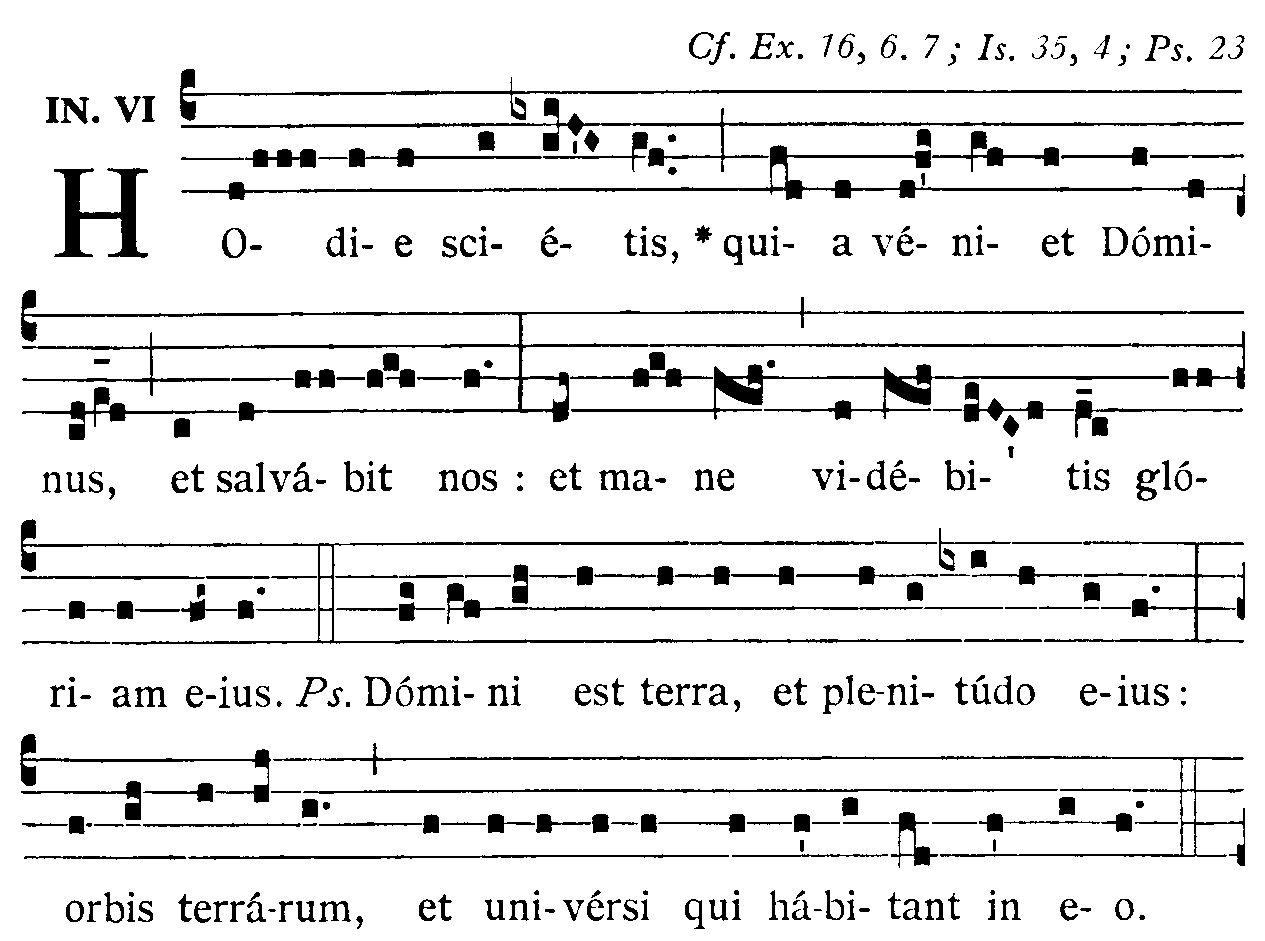
Dicitur Glória in excélsis.
Collecta
Deus, qui nos redemptiónis nostræ
ánnua exspectatióne lætíficas,
præsta, ut Unigénitum tuum,
quem læti suscípimus Redemptórem,
veniéntem quoque Iúdicem secúri vidére mereámur
Dóminum nostrum, Iesum Christum.
Qui tecum.
Dicitur Credo. Ad verba Et incarnátus est genuflectitur.
Super oblata
Tanto nos, Dómine, quǽsumus,
promptióre servítio hæc præcúrrere concéde sollémnia,
quanto in his constáre princípium
nostræ redemptiónis osténdis.
Per Christum.
Præfatio de Nativitate.
Quando adhibetur Canon Romanus, dicitur Communicántes proprium.
Ant. ad communionem Cf. Is 40, 5
Revelábitur glória Dómini,
et vidébit omnis caro salutáre Dei nostri.
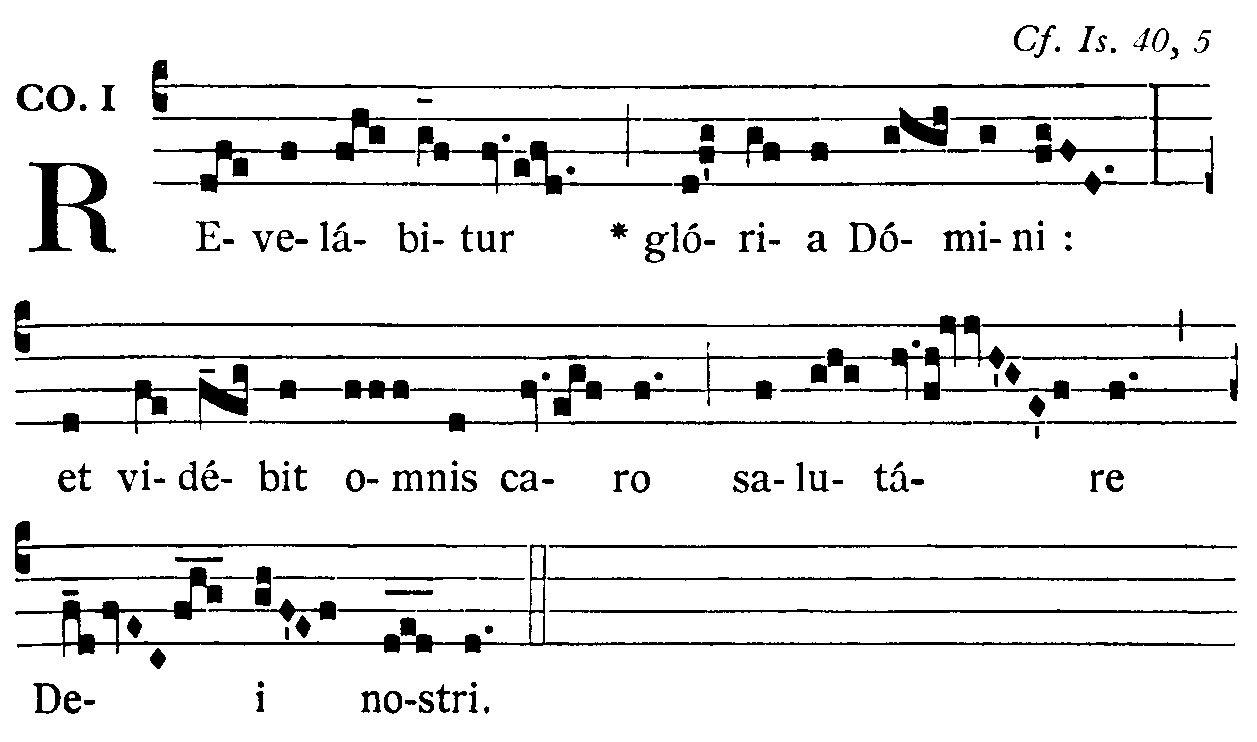
Post communionem
Da nobis, quǽsumus, Dómine,
Unigéniti Fílii tui recensíta nativitáte vegetári,
cuius cælésti mystério páscimur et potámur.
Qui vivit et regnat in sǽcula sæculórum.
Adhiberi potest formula benedictionis sollemnis.
Ad Missam in nocte
In Nativitate Domini omnes sacerdotes tres Missas celebrare vel concelebrare possunt, dummodo hæ suo tempore celebrentur.
Ant. ad introitum Ps 2, 7
Dóminus dixit ad me: Fílius meus es tu,
ego hódie génui te.
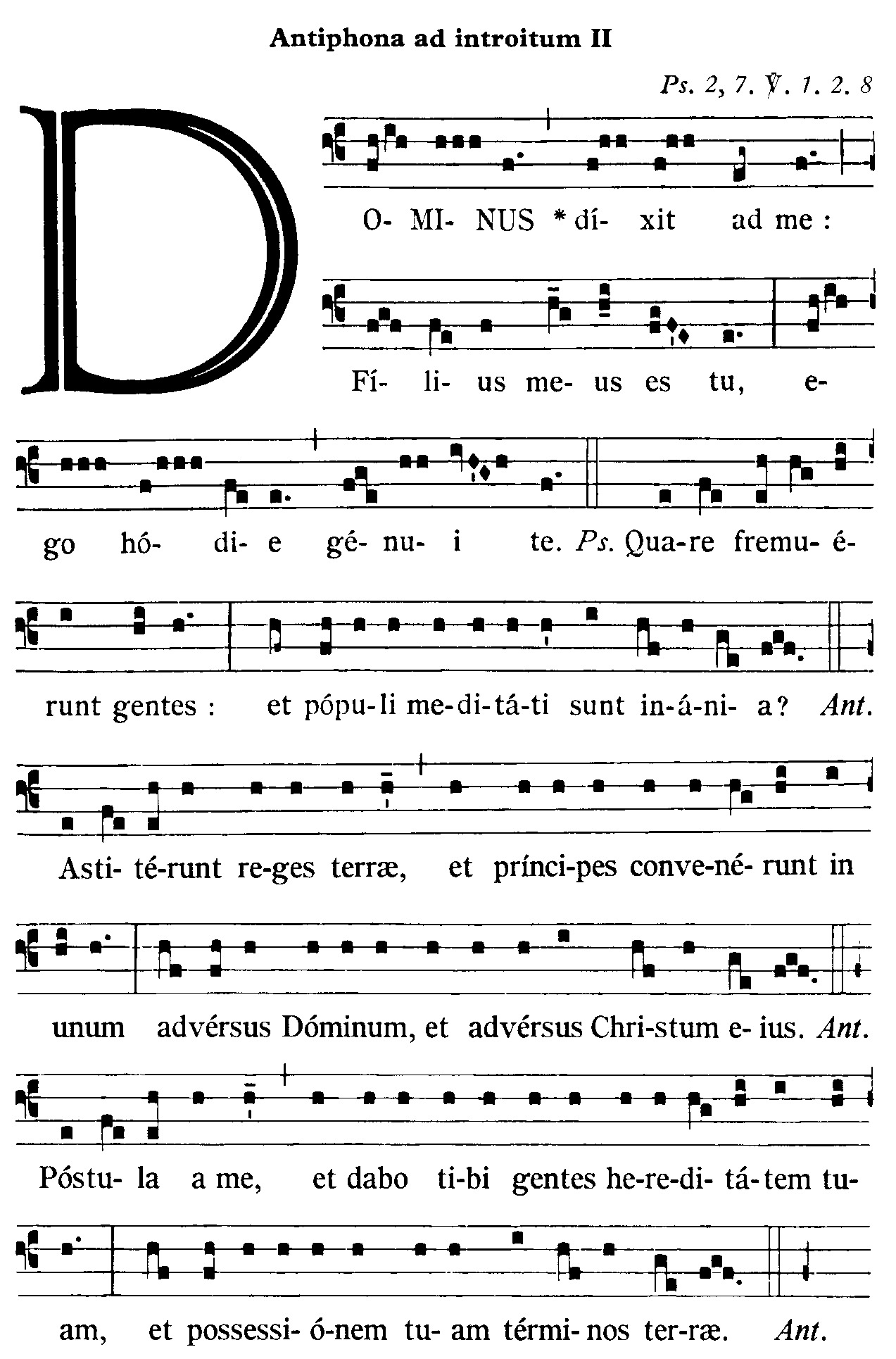
Vel:
Gaudeámus omnes in Dómino,
quia Salvátor noster natus est in mundo.
Hódie nobis de cælo pax vera descéndit.
Dicitur Glória in excélsis.
Collecta
Deus, qui hanc sacratíssimam noctem
veri lúminis fecísti illustratióne claréscere,
da, quǽsumus, ut, cuius in terra mystéria lucis agnóvimus,
eius quoque gáudiis perfruámur in cælo.
Qui tecum.
Dicitur Credo. Ad verba Et incarnátus est genuflectitur.
Super oblata
Grata tibi sit, Dómine, quǽsumus,
hodiérnæ festivitátis oblátio,
ut, per hæc sacrosáncta commércia,
in illíus inveniámur forma,
in quo tecum est nostra substántia.
Qui vivit et regnat in sǽcula sæculórum.
Præfatio de Nativitate.
Quando adhibetur Canon Romanus, dicitur Communicántes proprium.
Ant. ad communionem Io 1, 14
Verbum caro factum est, et vídimus glóriam eius.
Post communionem
Da nobis, quǽsumus, Dómine Deus noster,
ut, qui nativitátem Redemptóris nostri
frequentáre gaudémus,
dignis conversatiónibus
ad eius mereámur perveníre consórtium.
Qui vivit et regnat in sǽcula sæculórum.
Adhiberi potest formula benedictionis sollemnis.
Ad Missam in aurora
Ant. ad introitum Cf. Is 9, 2.6; Lc 1, 33
Lux fulgébit hódie super nos,
quia natus est nobis Dóminus;
et vocábitur admirábilis, Deus, Princeps pacis,
Pater futúri sǽculi: cuius regni non erit finis.
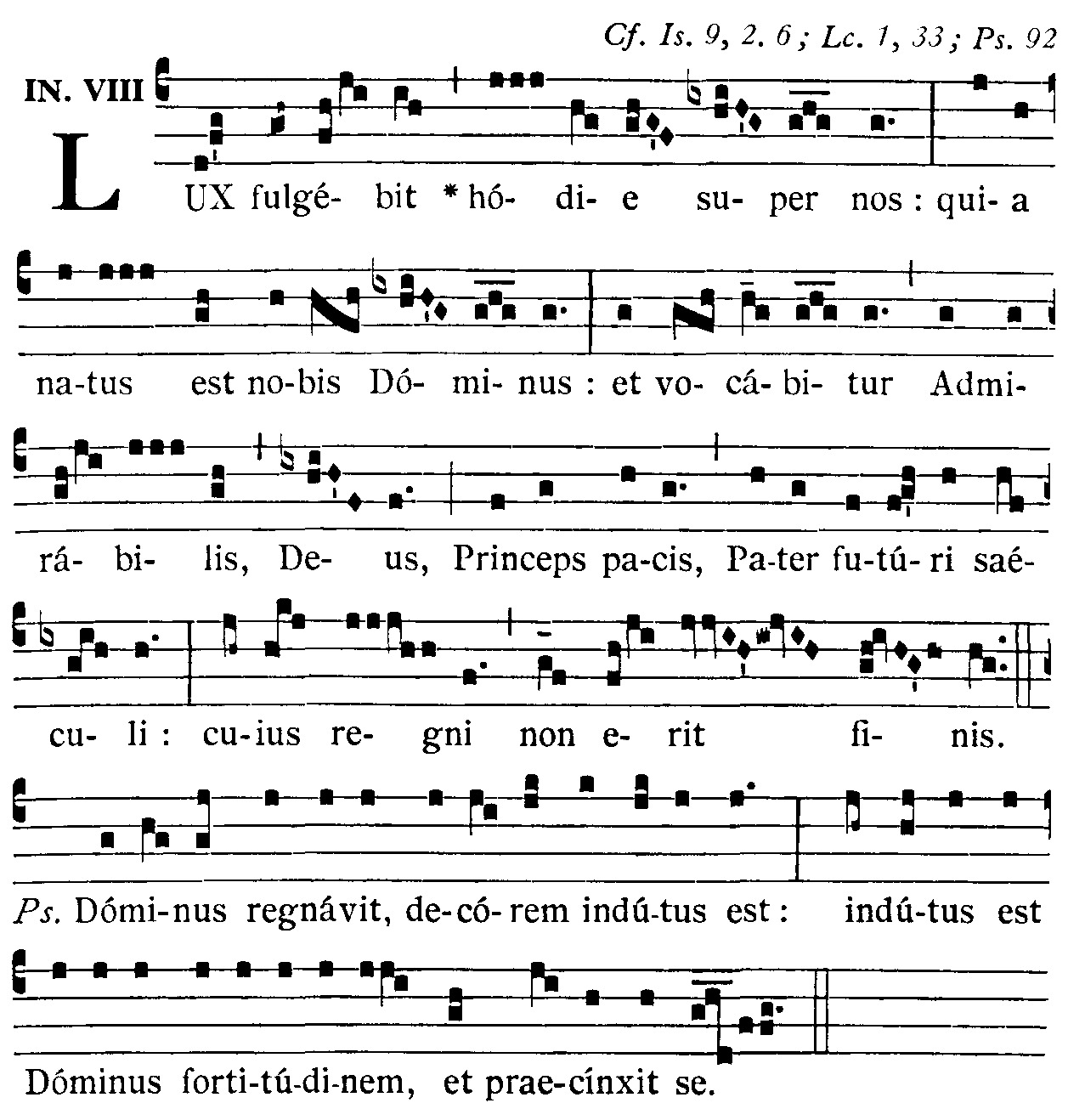
Dicitur Glória in excélsis.
Collecta
Da, quǽsumus, omnípotens Deus,
ut dum nova incarnáti Verbi tui luce perfúndimur,
hoc in nostro respléndeat ópere,
quod per fidem fulget in mente.
Per Dóminum.
Dicitur Credo. Ad verba Et incarnátus est genuflectitur.
Super oblata
Múnera nostra, quǽsumus, Dómine,
nativitátis hodiérnæ mystériis apta provéniant,
ut sicut homo génitus idem præfúlsit et Deus,
sic nobis hæc terréna substántia
cónferat quod divínum est.
Per Christum.
Præfatio de Nativitate.
Quando adhibetur Canon Romanus, dicitur Communicántes proprium.
Ant. ad communionem Cf. Zac 9, 9
Exsúlta, fília Sion, lauda, fília Ierúsalem:
ecce Rex tuus véniet sanctus et salvátor mundi.
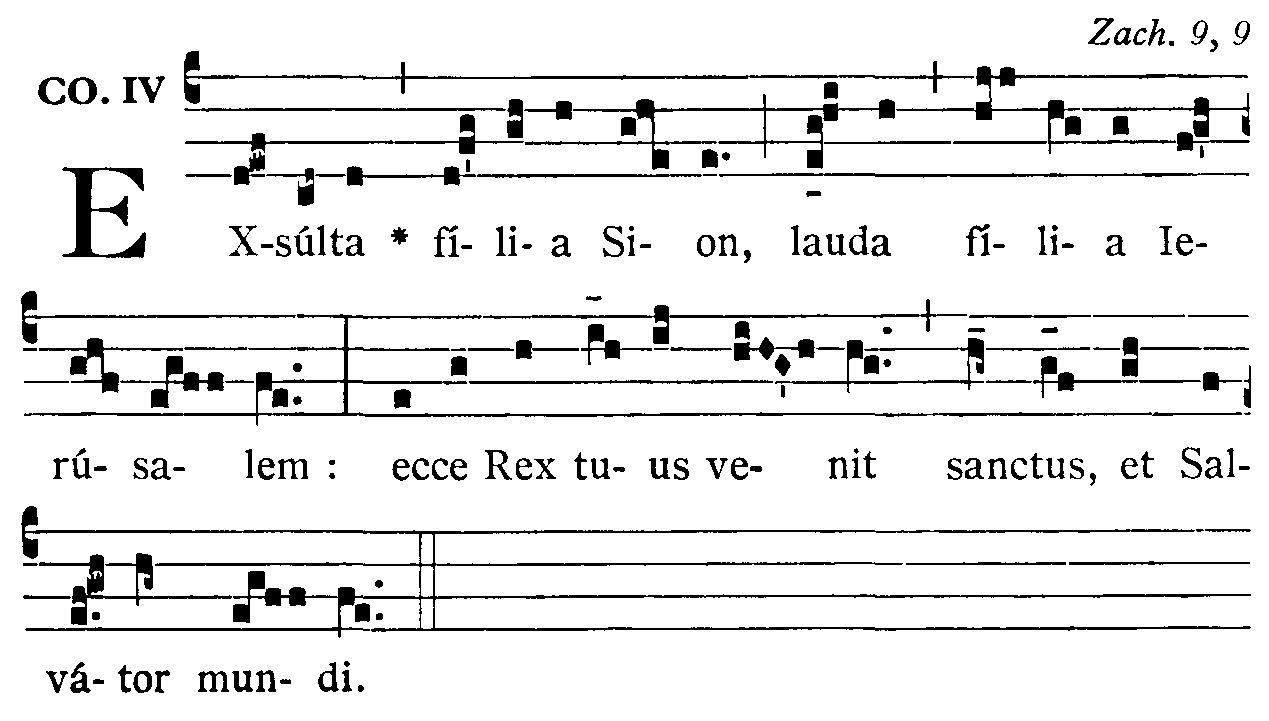
Post communionem
Da nobis, Dómine, Fílii tui nativitátem
læta devotióne coléntibus,
huius arcána mystérii et plena fide cognóscere,
et plenióre caritátis ardóre dilígere.
Per Christum.
Adhiberi potest formula benedictionis sollemnis.
Ad Missam in die
Ant. ad introitum Is 9, 6
Puer natus est nobis, et fílius datus est nobis,
cuius impérium super húmerum eius,
et vocábitur nomen eius magni consílii Angelus.
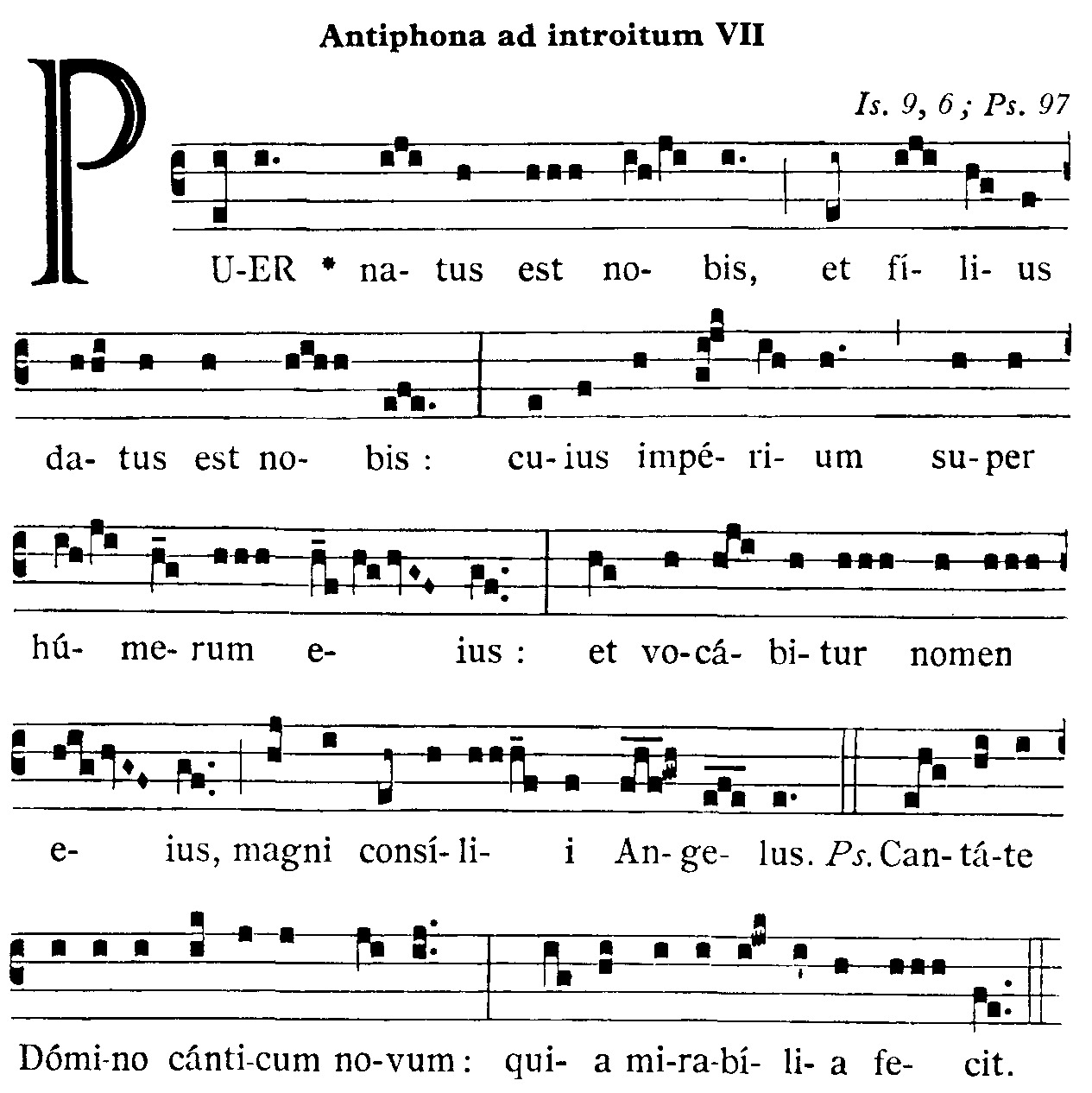
Dicitur Glória in excélsis.
Collecta
Deus, qui humánæ substántiæ dignitátem
et mirabíliter condidísti, et mirabílius reformásti,
da, quǽsumus, nobis eius divinitátis esse consórtes,
qui humanitátis nostræ fíeri dignátus est párticeps.
Qui tecum.
Dicitur Credo. Ad verba Et incarnátus est genuflectitur.
Super oblata
Oblátio tibi sit, Dómine, hodiérnæ sollemnitátis accépta,
qua et nostræ reconciliatiónis procéssit perfécta placátio,
et divíni cultus nobis est índita plenitúdo.
Per Christum.
Præfatio de Nativitate.
Quando adhibetur Canon Romanus, dicitur Communicántes proprium.
Ant. ad communionem Cf. Ps 97, 3
Vidérunt omnes fines terræ salutáre Dei nostri.
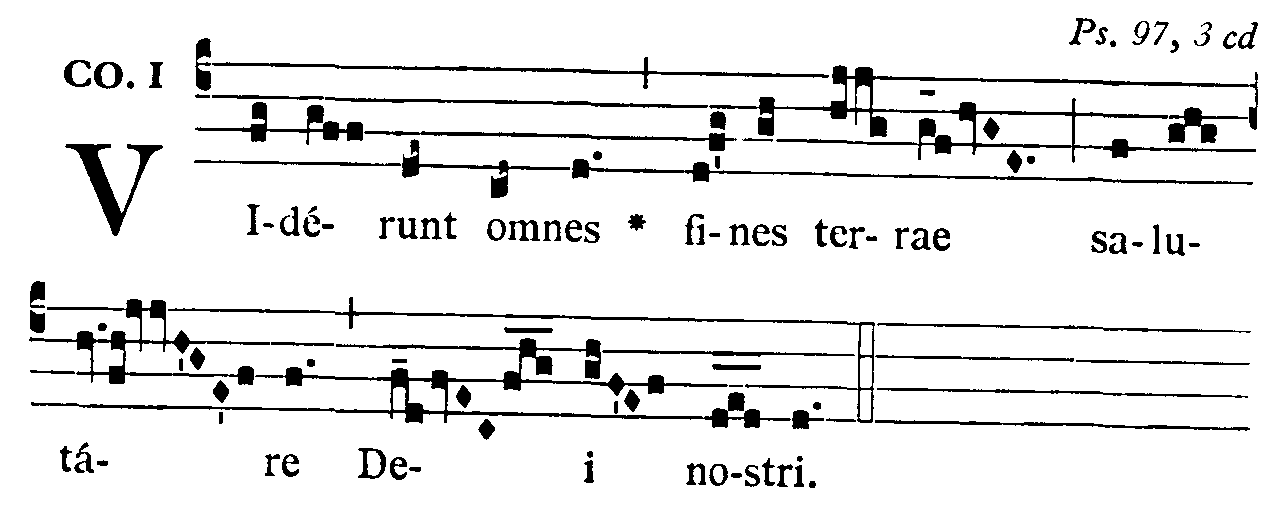
Post communionem
Præsta, miséricors Deus, ut natus hódie Salvátor mundi,
sicut divínæ nobis generatiónis est auctor,
ita et immortalitátis sit ipse largítor.
Qui vivit et regnat in sǽcula sæculórum.
Adhiberi potest formula benedictionis sollemnis.
© Copyright – Libreria Editrice Vaticana
Messalini in PDF con letture in lingua italiana (da stampare su fogli A3 fronte/retro): Messa vespertina della Vigilia – Messa della Notte – Messa dell’Aurora – Messa del Giorno
Missalettes in PDF with readings in English (to be printed on A3 sheets, front/back): At the Vigil Mass – At the Mass during the Night – At the Mass at Dawn – At the Mass during the Day








